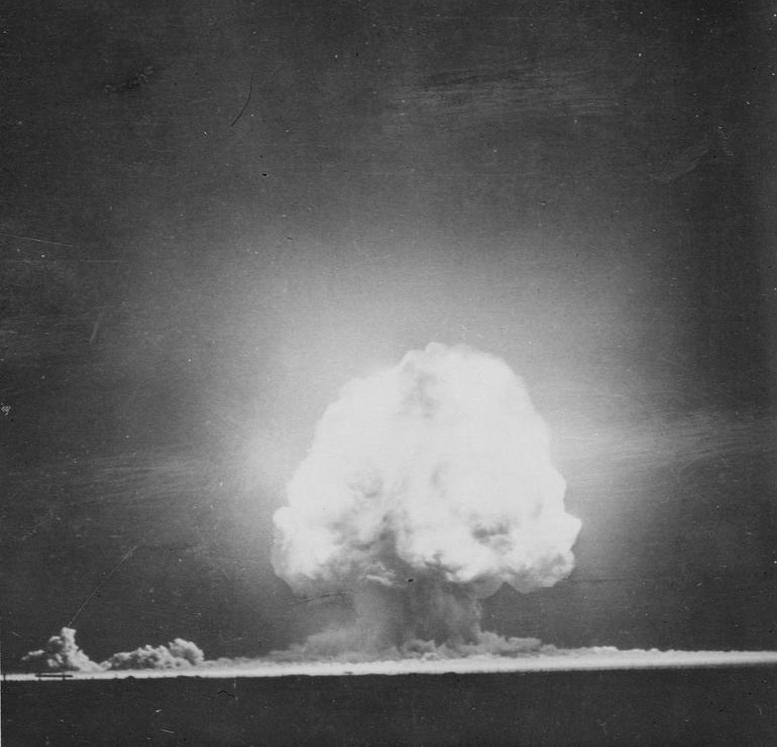At AllThingsNature, we're committed to delivering accurate, trustworthy information. Our expert-authored content is rigorously fact-checked and sourced from credible authorities. Discover how we uphold the highest standards in providing you with reliable knowledge.
What is Greenpeace?
Greenpeace was formed in 1971 to protest the proliferation of nuclear testing. Since that time, it has become a major force in the fight for conservation of natural resources and the protection of animal species. The organization is now an international group, with regional offices in 48 countries.
In the early 1970s, a group of environmental activists formed the organization to fight against nuclear testing in Canada. This group included Paul Weston, Robert Hunter, Dr. Patrick Moore, Dorothy Stowe and Bill Darnell. Many of the founders were members of the Society of Friends, a religious sect also called the Quakers. The group was in favor of nonviolent but direct protest of nuclear tests conducted under the island of Amchitka, Alaska. While the tests were not prevented, the protests drew worldwide attention, and Greenpeace became a key player in the fight against nuclear proliferation.

In 1974, Greenpeace began the first of its many campaigns against the commercial slaughter of wild animals. Inspired by the encounters of Robert Hunter, one of the founders, with a killer whale, the group began an anti-whaling campaign on the California coast. At this time, commercial whaling had depleted the stocks of whale species so far, many scientists believed they would never recover. Greenpeace’s efforts are often credited with pressuring nations to create wildlife protection laws and the International Whaling Committee (IWC) to instate a moratorium on commercial whaling.

By 1979, dozens of branches of the organization existed throughout the world, but they were not under the auspices of any connective authority. The original foundation, still based in Canada, finally convinced the branches to create Greenpeace International, to which local branches would contribute a portion of contributions. The international foundation set and prioritized the goals of the local offices, creating a cohesive global structure for the group.

Criticism of the group tends to run in two directions. Some founders of the organization have since become detractors of it, claiming it has become too commercial, corporate, and detached from its activist roots. Paul Watson, an original founder and later creator of Sea Shepherd, is particularly vocal in his assertions that Greenpeace is not doing the job it set out to do.
Other critics claim the organization is too alarmist or radical, and heavily criticizes its protests as anti-business and nuisances to workers. Recent criticisms have been leveled against the organizations’ protest of genetically engineered crops. Detractors of the organization also claim that Greenpeace modifies facts to suit their purposes, including in their estimates of the damage caused by nuclear testing.
In the 21st century, the major issues of the organization still revolve around conservation and global protection. As of May, 2008, the list of priority issues on the website includes global warming, damage to oceans and forests, nuclear energy, toxic substances, and genetic engineering. If you are concerned about any of these issues, Greenpeace offers many suggestions on what you can do to help, from using biodegradable products to volunteering with the organization.
Frequently Asked Questions
What is the primary mission of Greenpeace?
Greenpeace is an independent global campaigning network that focuses on environmental issues. Its primary mission is to ensure the ability of the Earth to nurture life in all its diversity. This involves campaigning for sustainable agriculture, protecting biodiversity, advocating for renewable energy, and fighting against environmental abuses such as deforestation and ocean pollution.
How does Greenpeace operate and fund its campaigns?
Greenpeace operates through a combination of peaceful protest, creative communication, and research to expose global environmental problems and promote solutions. It is funded by contributions from individual supporters and foundation grants. Greenpeace does not accept donations from governments or corporations to maintain its independence and objectivity in campaigning.
What are some notable achievements of Greenpeace?
Greenpeace has been instrumental in several environmental victories. For instance, it played a key role in the establishment of the Antarctic Treaty, which designates Antarctica as a natural reserve. It has also been successful in convincing major companies to adopt more sustainable practices and has been a driving force in the adoption of international treaties to protect the environment.
How can individuals get involved with Greenpeace?
Individuals can get involved with Greenpeace by volunteering, participating in local events, signing petitions, or joining as activists to support various campaigns. People can also contribute by making financial donations or by spreading awareness of environmental issues and Greenpeace's work through social media and personal networks.
What makes Greenpeace different from other environmental organizations?
Greenpeace is known for its direct action approach, often involving dramatic demonstrations and peaceful protests to draw attention to environmental issues. Its commitment to non-violence, independence from corporate and government funding, and global presence with a network of offices in over 55 countries set it apart from other environmental organizations.
Has Greenpeace faced any criticism or controversy?
Yes, Greenpeace has faced criticism and controversy over the years. Some have questioned its methods, particularly the use of direct action, which can be polarizing. Others have scrutinized its messaging and campaign strategies. Despite this, Greenpeace maintains that its actions are necessary to bring urgent attention to critical environmental issues.
AS FEATURED ON:
AS FEATURED ON:













Discussion Comments
Can you put more information because I'd like to find out more about the history. it's really interesting.
what does the logo mean and why does greenpeace have this specific one? thanks to anyone who answers, not that anybody will because it's a weird topic!
Post your comments